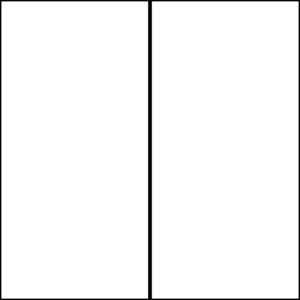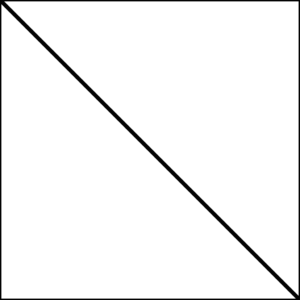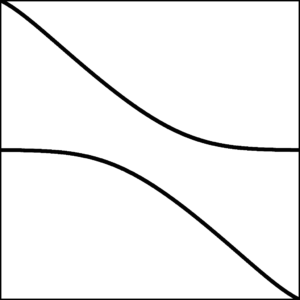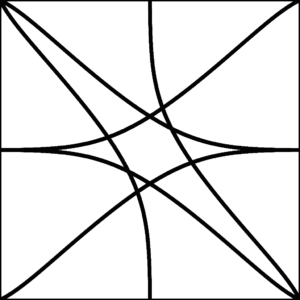The unsigned_algorithms collection is composed of 8 basic forms: Single Beam, Triple Beam, Diffuser, Hourglass, River, Single Bulbs, Veins, Triple Bulbs. You might have noticed while reading Anatomy of an unsig or looking up the details of an unsig that many forms have orientations: horizontal, vertical, ascending, descending, upward, downward. What do all of these mean?
Horizontal & Vertical
Two forms have horizontal and vertical orientations: Single Beams and Triple Beams. These forms consist of one or three lines connecting either the top and bottom of an unsig (vertical) or the left and right of an unsig (horizontal.)

Vertical

Horizontal
Ascending & Descending
Except for Single Beams and Triple Beams, all other forms have ascending and descending orientations.
For three forms these orientations are pretty straightforward. The Diffuser, Single Bulbs, and Triple Bulbs forms have a diagonal line that connects two corners. When the bottom left corner is connected to the upper right corner, the form is ascending. When the bottom top left corner is connected to the bottom right corner, the form is descending.

Ascending

Descending
The remaining forms are a bit tricky. For the Hourglass, Rivers, and Veins, there are multiple lines so we need to look at the orientation of the whole form rather than a single line.
Visual examples will convey the idea a bit better than words, but in general an ascending Hourglass, River, or Veins has a form that is angled from the bottom half of the left side to the upper half of the right side. Descending would be a form connecting the top half of the left side to the bottom half of the right side.

Ascending

Descending
Upward & Downward
In addition to ascending and descending, the Hourglass, River, and Veins forms can also appear in upward and downward orientations. In these orientations the forms connect the top and bottom sides of an unsig instead of the left and right. An upward form would connect the left half of the bottom side with the right half of the top side of an unsig. A downward form would connect the left half of the top side with the right half of the bottom side.

Upward

Downward
Form orientations and geometries
A geometry is the orientation of forms relative to one another. The forms in a geometry might appear flipped or rotated, but if their orientation relative to one another is the same, the geometry is the same.
The examples below are the same geometry as the image at the top of this post, 3F-096. It is the only geometry in the collection that contains three visible forms that are exactly the same: Hourglasses.
In the first example below we see a downward Hourglass (magenta), an upward Hourglass (yellow), and a descending Hourglass (cyan).
In the second example, unsig has been rotated 90 degrees. Even though the Hourglasses have changed orientation relative to the viewer, they are still the same relative to one another. In both examples the magenta and cyan Hourglasses are mirrored along the diagonal, and the magenta and yellow Hourglasses are mirrored across the center axis.
If you explore the geometry galleries, you’ll see a description like the one above for each geometry. Some unsigs look exactly the same but appear flipped or in a different rotation (sometimes both.) In those cases it will be helpful to know that they share a geometry.


